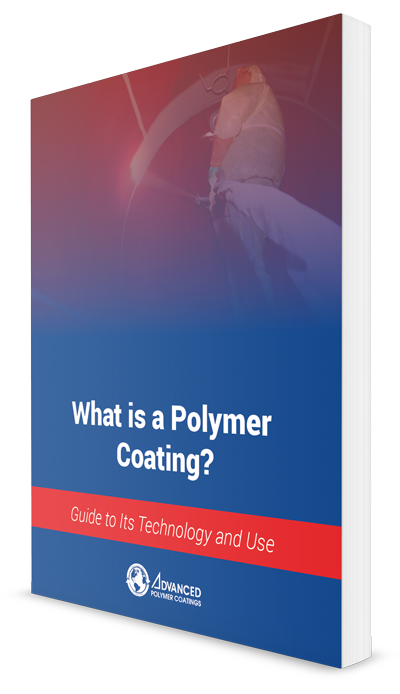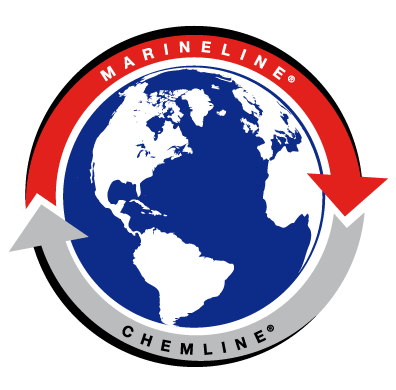What is a Polymer Coating?
A polymer coating is a thin layered coating or paint made with polymers that provide superior adherence and protection from corrosion. A polymer is a molecule made by joining together many small molecules called monomers that are made up of a large number of similar units. This can include synthetic organic materials like resins and plastics.
As a leading coatings solution provider, our commitment encourages us to stay on top of the latest advancements in the coating industry. This article gives a brief history of where it all began, industry growth, and the advantages of optimal performance when using the right polymer coating.
Chapters
Chapter 1
Brief History of Polymer Technology in the Coating Industry

image credit: chemical structure of Epoxy prepolymer, Wikipedia (cc-by-
When looking at the history of polymer coatings, we can reflect on the workings of Herman Mark, who established the Polymer Research Institute in 1946, which became the center for polymer research in the United States. Or, we could start in 1953 when a German chemist, Hermann Staudinger, won the Nobel Prize for Chemistry for demonstrating that polymers are long-chain molecules (giant molecules).
Staudinger's work laid the foundation for the expansion of the plastics industry. The chemical composition and structure of these giant molecules made them suitable for industrial applications.
The door opened for polymers when Aerospace composite requirements needed high strength, lightweight, corrosion resistance, and cost-effective materials. Different polymers were considered to meet these performance requirements. A few polymers that were studied include:
Phenolics - extremely brittle, lack of toughness,
Polyester - low physical properties, poor bonding
Vinyl Ester - high styrene content (not good to breath) - extremely flammable and toxic during application and cure, sensitive to atmospheric moisture and temperature, short shelf life (3 months), high cure shrinkage - leading to being very brittle, one-third the strength of epoxy resins, poor bonding
Epoxies - high strength, high bond, low surface energy, chemical resistance
Epoxy polymers, a class of thermosetting polymers, became the best choice. They are stable,
Most surface coatings are based on synthetic polymers, industrially produced, and form tough, durable films when applied to surfaces.
Chapter 2
What is a Polymer Coating, Industry News and Growth
A polymer coating is a coating or paint made with polymers that provide superior adherence and protection from corrosion, according to Corrosionpedia. To fully understand a polymer coating, one needs to comprehend the actions of a polymer. Looking at the definition of a polymer noted by Wikipedia, a polymer is a molecule made from joining together many small molecules called monomers.
This type of chemical reaction (bonding together into a larger molecule) creates the functional behavior of the coatings. At APC, our chemical coatings are high-performance specialty coatings that can resist corrosive acids, alkalis, and solvents at various temperatures.
Industrial Coatings Industry News
"Global demand for industrial coatings is projected to touch $105.5 billion by 2022, growing by a rate compounded annually at 6.1% between 2016 and 2022". [source]
Over the last ten years, research has brought us closer to functional coatings that are easy to use, self-cleaning, antibacterial, or consist of antifouling properties. One of polymer coating's most substantial advantages is it has little or no impact on other properties when being used. For example, when coatings are applied for protection purposes to transport and store chemicals, safety and mechanical strength are not compromised.
Coatings are resistant and durable. Because they are primarily used for protection against the elements (e.g., water, corrosion, environment), they must meet high-performance requirements.
Chapter 3
Use of Polymer and a Polymer Coating
Polymers have unique properties that can be fitted for different uses. Polymers can be man-made (synthetic) and/or natural (e.g., rubber, shellac, cellulose). Depending on their desired use, they can be used for scratch and abrasion resistance, elasticity, or brittleness.
Polymer coatings are everywhere. They are used in your home for protecting tables and furniture and for cars, hospitals, and healthcare environments, to name a few.
Machine Design shared an example of a polymer strong enough to withstand repeated sterilization cycles and also be machined easily. "The polymer’s thermal and dimensional stability, together with its resistance to chemicals and non-absorption of water, make it a good choice for parts that will require repeated disinfections and steam sterilization."
As a leader in industrial coating, our polymers are fine-tuned to influence protective properties.
Use of a polymer coating depends on:
- operating temperature
- wear and tear of environment
- type of corrosion
Quality surface preparation and application methods play a central role between the coating and substrate and offer resistance to the elements.
Chapter 4
Polymer Coating Advantages for Optimal Performance (Real-life Example)
A chemical coating is a covering applied to the surface of an object, also known as the substrate. For example, coatings such as polymer paints and lacquers perform a two-fold function: to protect the substrate and as decoration.
Functional coatings change the surface properties of the layer underneath. It can be applied for adhesion, wettability, corrosion resistance, and wear resistance.
1. Adhesion - binds together dissimilar surfaces
2. Wettability - is the ability of a liquid to maintain contact with a solid surface
3. Corrosion resistance - some metals are more resistant to corrosion (the conversion of refined metal to a chemically-stable form), than others. You can protect metals from oxidation (corrosion) by applying polymer paints or coatings.
4. Wear resistance - wear rate varies depending on its stage (early, middle, or old). The fundamental cause of wear resistance is chemical reactions between the worn material and the corroding medium. [source:
Advanced Coatings for Optimal Performance (Real-world Example)
Hutchison Ports
Watch the video below as they apply advanced coatings for a greater ship performance.
Their project applications include:
- glass fiber reinforced coatings - to protect against cavitation and corrosion
- antifouling coatings - to optimize the efficiency of the boat's fuel consumption
- chemically resistant polymer coatings - for the storage of chemical products
These coatings improve operational efficiency, reduce port time, and increase bottom line profits.
Chapter 5
Safety Procedures For Handling a Polymer Coating
The application of a polymer coating to various surfaces requires specific procedures. It's crucial to protect yourself or employees who are applying coatings with these step-by-step guidelines:
Step 1: Use experienced people in the application of industrial coatings
Step 2: Ensure proper ventilation of the workplaces
Step 3: Apply skin lotion (barrier cream) containing lanolin to hands, arms, and face prior to working with coating
Step 4: Furnish proper safety equipment and clothing for each worker when using these products
Step 5: Wear protective clothing
- When mixing, prepping, or repairing: wear rubber gloves, protective overalls, chemical goggles, and gas/vapor purifying respirators.
- When spraying: wear rubber gloves, protective overalls, plastic boots, protective hood, and full face positive air pressure mask. Tape closed all openings.
Step 6: Use soap and water only to clean any coating off
Step 7: Reapply skin lotion after washing
Step 8: Use cortisone cream if any reddening of your skin occurs
Conclusion
Polymer coatings and technology is growing exponentially. Chemical coatings are utilized for a variety of purposes and performance requirements.
At APC, we understand the challenges you face every day and we continue to develop and improve our coatings and technologies.
As a quality, premier coatings solutions provider, we provide innovative, value-added coatings for the protection of your assets.







